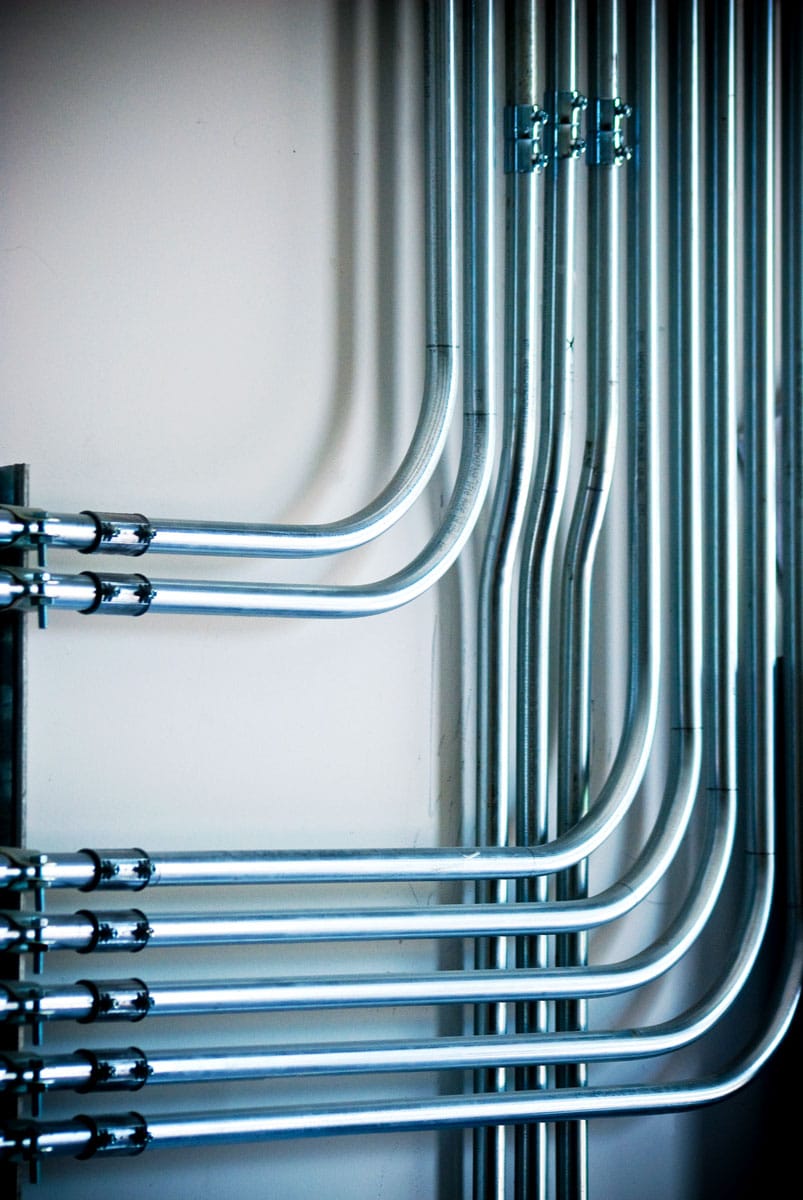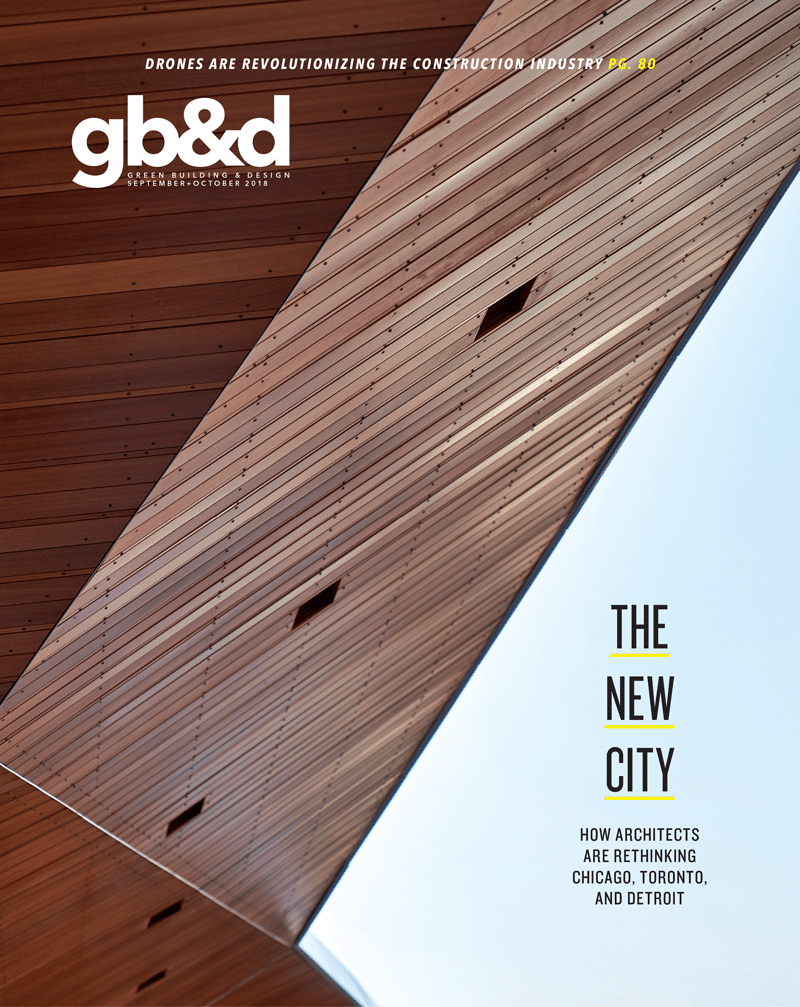The Steel Tube Institute shows us why this electrical raceway option is the most cost effective and long-lasting.

[Photo: Courtesy of Steel Tube Institute]
When a group of manufacturers joined forces in 1930, they had one goal as they created the Steel Tube Institute (STI)—to promote and market the utility and versatility of steel tubing. Nearly 100 years later, that remains their primary goal—to improve manufacturing processes and inform those within the industry of the advantages of building with steel tubing.
As a trade association operating as a nonprofit, The Steel Tube Institute consists of several member companies along with five product committees and various task forces working to address safety, technical, and manufacturing questions as well as sponsor applicable research and software for industry engineers and electricians.
One product the institute stands behind is steel conduit, a versatile wiring method most commonly used for electrical raceways transferring power, data, and communications throughout commercial, residential, and industrial buildings. “You know the ‘got milk’ campaign for American dairy farmers? Well, we’re the ‘got milk’ for steel conduit,” explains Dale Crawford, the institute’s director of steel conduit who works closely with the companies within STI’s steel conduit division—Allied Tube & Conduit, Republic Conduit, Western Tube & Conduit, and Wheatland Tube.
FROM OUR SEPT+OCT 2018 ISSUE

[Photo: Courtesy of Steel Tube Institute]
Though there are cabling options, which have their place, but are typically installed in a fixed configuration that is not easily replaced. Some other solutions that utilize nonmetallic raceways also produce toxic fumes when burned, leading to additional concerns. Meanwhile, the three types of steel conduit used today—rigid metal conduit (RMC), intermediate metal conduit (IMC), and electrical metallic tubing (EMT)—are, well, made of steel, a noncombustible, crush-resistant material that will last (or outlast) the lifespan of any building. “There’s nothing quite as strong or quite as resilient,” Crawford says. “That’s why steel conduit has been the go-to wiring method for well over 100 years.”
1: Money talks
Steel conduit saves—from the cost of installation throughout the life of a building. “What often isn’t, but needs to be, considered is the full life cycle cost of a building,” says Crawford. When it comes to new construction, steel conduit does not require a ground wire to enhance the safety of the installation, meaning budgeting for additional conductors is unnecessary. Plus, due to steel conduit’s flexibility and reusability, even as a building changes drastically over the years, conduit electrical raceways can be left in place, saving you the recurring expense of replacing cabling as the building evolves.
2: 100 years new
The recognition of steel conduit’s resiliency is a modern and positive trend. For a century, steel conduit has been an industry go-to, thanks to its superior protection against physical damage. But as we face greater natural and manmade disasters, building a stronger infrastructure is increasingly important—and steel conduit is the perfect electrical raceway because it allows for wiring to be removed, changed, updated, and for the raceway to be reused, something that’s generally not feasible with cabling methods. The conduit raceway can even be flushed out and cleaned, if necessary in cases involved flooding, in preparation for new wiring to be installed. “While steel conduit may be the old product that’s been around 100+ years, in reality, it might be the product of the future,” Crawford says.

[Photo: Courtesy of Steel Tube Institute]
3: The world’s most recycled material
The longevity and reusability of steel conduit supports sustainable building practices. Steel can be recycled endlessly and used for nearly any purpose. “The sustainability of steel conduit comes with the recyclability of steel itself,” Crawford says. Steel conduit also helps reduce environmental impact with its long service life (some RMC has been in use for more than 60 years) and ability to accommodate new conductors and additional circuits—allowing raceways to be reused over time.
4: Up to code
Steel conduit is allowed everywhere. The National Electric Code implements rigorous restrictions on all types of materials, but steel conduit has always been allowed everywhere. “As buildings get bigger and more complex and it becomes more difficult to protect occupants, other wiring methods are more restricted by the NEC while steel conduit is allowed literally any place while also providing the best protection,” says Joe Andre, STI technical consultant.
5: Handles the heat
Made of noncombustible material, steel conduit protects against fire and explosions. For any place in a building that fire could reach, steel conduit is easy to install, provides additional protection against fire damage, and will not burn. “There are methods for making the alternatives safe in a fire, but those options are more expensive and time-consuming,” Andre says. In locations like gas stations or grain elevators with high explosion risks, RMC and IMC steel conduit protects conductors so they don’t become a source of ignition.

[Photo: Courtesy of Steel Tube Institute]
6: Immune to the elements
To meet industry standards and NEC requirements, steel conduit has to be provided with corrosion protection. Steel rusts. So steel conduit goes through several preventative processes, such as zinc galvanizing and conversion coatings, to ensure extreme elements won’t cause rapid deterioration. “Manufacturers want their product to be long-performing, so they go to great lengths to ensure steel conduit is protected against corrosion,” Andre says.
7: In the age of technology
Because of its steel construction, steel conduit can protect highly sensitive data from electromagnetic interference. Just imagine the banking information whizzing through electrical circuits or the cables powering the monitors or other sensitive equipment in an operating room—all of that information travels through wiring and electrical raceways. “Whenever you’re dealing with wiring or electrical equipment, there’s potential for electromagnetic interference (EMI),” Crawford says. Steel conduit’s superior protection against EMI will protect whatever data or equipment that is currently in service in your building now, or that will be at any point in the building’s future.
The Chicago Amendment
Though steel conduit is not typically used in residential construction, it’s required in Chicago homes.
Steel conduit is most commonly used in commercial and industrial building projects, however, on residential level, non-metallic cable is more widely used. But there is one oddity within the U.S. residential construction market—the Chicago metro area. The Chicago Electric Code makes amendments to the National Electric Code that requires steel conduit raceways in all homes. So while most homes in, say, Colorado, California, or Atlanta likely utilize nonmetallic wiring, Chicago uses conduit. Data from the CPSC Residential Fire Loss Estimates and the Chicago Fire Department NFIRS indicate a drastic difference between the low number of electrical fires in Chicago residences versus the rest of the country (see sidebar on the Chicago Electrical Code). Plus, because of conduit’s ability to be reused, this means a home undergoing renovations in Chicago can have wiring replaced in an afternoon, while those same homes in Colorado, California, and Atlanta will be pulling and replacing drywall and finishings for significantly longer.

